 Cannabis pests are the bane of every grower’s existence.
Cannabis pests are the bane of every grower’s existence.
You can do everything right and still lose an entire harvest.
But if you know what to look for, you can find them early.
Early enough that you can do something about them and save your harvest.
And even better than early detection is prevention.
We will cover it all below. We’ll show you how to recognize the most common marijuana pests, how to eliminate them, and how to prevent them in the first place.
Contents
Common Cannabis Pests
The following pests can all wreak havoc on your weed plants, but if you know how to recognize them, you can eliminate them before they destroy your marijuana crop. Even better, learn how to prevent an infestation in the first place.
Aphids
Aphids are small, soft-bodied insects that feed on the sap of cannabis plants. They can be green, yellow, brown, or black in color and are commonly found lurking on the undersides of leaves.
How To Recognize
To spot an aphid infestation, look for clusters of tiny, pear-shaped insects on the undersides of the leaves, stems, and buds of your cannabis plants. You may also notice sticky residue, called honeydew, on the leaves.
How To Eliminate
To get rid of the aphids, you can physically remove them by spraying your plants with a strong stream of water or by using insecticidal soap or neem oil. You can also introduce natural predators, like ladybugs or lacewings, to control the aphid population.
How To Prevent
To help prevent aphid infestations, keep your cannabis plants healthy and free from stress. Regularly inspect your plants for signs of aphids and promptly address any issues.
Additionally, practicing good hygiene in your garden, such as removing weed hosts and debris, can help prevent aphids from establishing colonies.
Caterpillars
Caterpillars are the larval stage of moths and butterflies. They have soft bodies and can vary in color and size. They will happily munch on the leaves, stems, and buds of your cannabis plants if left unchecked.
How To Recognize
To recognize a caterpillar infestation, look for chewed leaves, holes in the buds, or webbing on the plants. You may also spot the caterpillars themselves, which can be green, brown, or striped, or their small black droppings.
How To Eliminate
To eliminate caterpillars, you can manually remove them from your plants. If the infestation is severe, you can use organic insecticides, like Bacillus thuringiensis (Bt) or spinosad, to control their population. Be careful of poisonous caterpillars that may irritate your skin, and take necessary precautions before handling them.
How To Prevent
To prevent caterpillar infestations, regularly inspect your plants for eggs or caterpillars and remove them immediately. You can also use physical barriers, such as netting or row covers, to protect your plants from adult butterflies and moths laying eggs.
Crickets & Grasshoppers
Crickets and grasshoppers are insects with long hind legs and powerful jaws. They feed on the leaves and stems of cannabis plants. They are very similar creatures, but grasshoppers tend to be active during the day, while crickets are more active at night.
How To Recognize
If you haven’t immediately noticed the creatures on your plants, look for chewed leaves, irregular holes, or missing plant parts. You may also hear the distinctive chirping sounds of grasshoppers or crickets in your garden.
How To Eliminate
To rid your crop of crickets and grasshoppers, you can manually remove them from your plants. Additionally, you can spray your plants with insecticidal soaps or organic pesticides that are designed to deter crickets and grasshoppers.
How To Prevent
To prevent cricket and grasshopper infestations, you can use physical barriers like mesh netting to protect your plants. Removing nearby weeds and debris can also reduce their habitat and make the general area less appealing to them.
Fungus Gnats
Fungus gnats are small, mosquito-like flies that lay their eggs in the soil. The larvae feed on organic matter and can damage the roots of cannabis plants, which will hinder your crop’s growth and potentially kill some plants.
How To Recognize
To spot a fungus gnat infestation, keep an eye out for tiny black flies hovering around the base of your plants or crawling on the soil surface. You may also notice yellowing leaves begin to appear, as well as stunted growth.
How To Eliminate
To eliminate fungus gnats, you can use sticky traps to catch the adult flies. For the larvae, allow the soil to dry out slightly between watering and use beneficial nematodes or predatory mites to control their population.
How To Prevent
Fungus gnats enjoy moist conditions, so avoid overwatering your plants and ensure proper drainage. Using sterile potting soil and allowing the top layer of soil to dry out between watering can also discourage their presence.
Hemp Russet Mites
Hemp russet mites are tiny, translucent pests that feed on the sap of cannabis plants. They are difficult to see with the naked eye and often require a magnifying glass for proper identification.
How To Recognize
Clues that you may have a hemp russet mite infestation include signs such as yellowing or bronzing of leaves, distorted growth, or a web-like appearance on the plants. You may also notice a decrease in resin production and your pants may begin to appear listless.
How To Eliminate
Tackling an infestation of hemp russet mites can be challenging due to their minute size and ability to hide. If the infestation is severe, you may need to consider removing heavily affected plants to prevent the spread to healthy ones.
Pruning and disposing of infested plant leaves and stems can also help control their population. Spraying with organic insecticides like neem oil or insecticidal soaps can also help banish them form your precious plants.
How To Prevent
To prevent hemp russet mite infestations, it is important to maintain a clean and healthy growing environment. Regular inspections of your plants for any signs of infestation and promptly addressing any issues are the best way to prevent a large infestation, since you can start to act at the earliest signs of their presence.
Hoppers
Hoppers, also known as leafhoppers, are small, wedge-shaped insects that jump or fly when disturbed. They feed on the sap of many different plants, including cannabis plants, and can transmit diseases between plants.
How To Recognize
Regularly inspect your plants and keep an eye out for small, winged insects hiding amongst the foliage. They may be green, brown, or yellow in color. You may also observe stippling or yellowing of leaves, and your plants may appear to droop a little.
How To Eliminate
To remove hoppers from your plants, you can use physical methods such as spraying your plants with a garden hose to dislodge them. Applying insecticidal soaps or neem oil can also be effective in controlling their population and discouraging them from returning.
How To Prevent
While nets and mesh are not effective, maintaining a healthy growing environment for your cannabis plants can help. Adequate nutrition and proper watering practices can help strengthen your plants and make them less susceptible to pests.
Additionally, removing weeds and debris around your garden can reduce their habitat and make them less likely to find your garden attractive.
Leaf Miners
Leaf miners are the larvae of small flies or moths that tunnel through the leaves of plants. They create distinctive winding tunnels or trails, causing cosmetic damage to the leaves as they go.
How To Recognize
Look for light-colored tunnels or trails on the leaves of your plants. You may also notice whitish or yellowish blotches on the foliage. In severe cases, the leaves may become distorted or prematurely drop.
How To Eliminate
If you spot any signs of leaf miners, you can manually remove any affected leaves and dispose of them properly. Pruning heavily infested branches can also help control their population. Using organic insecticides, like spinosad or pyrethrin, can be effective in targeting the adult flies or moths.
How To Prevent
To stop an infestation, regularly inspect leaves for signs of leaf miners and take immediate action if detected. Introducing natural predators, like parasitic wasps or beneficial nematodes, can also help control their population.
Mealybugs & Whiteflies
Mealybugs and whiteflies are small, soft-bodied insects that often appear as white, cottony masses on cannabis plants. They feed on plant sap and can weaken your plants if left untreated.
How To Recognize
Look for white, fuzzy, or cotton-like clusters on the underside of leaves, the stems, and buds of your cannabis plants. You may also notice sticky residue, called honeydew, on the leaves. In severe cases, the plant may become stunted or the leaves will begin to wilt.
How To Eliminate
You can physically remove mealybugs and whiteflies by using a cotton swab dipped in rubbing alcohol to dab and kill individual bugs. You can also spray the affected areas with a mixture of water and mild dish soap, making sure to cover the entire plant thoroughly, include the underside of the leaves. You may need to respray for a number of days.
How To Prevent
Regularly inspecting your plants for these small beasties is the best way to prevent a full-blown infestation. Keep a close on on the underside of the leaves, and remove any infected leaves or spray them with your soapy water mixture.
Scale Insects
Scale insects are small, immobile pests that often appear as small, barnacle-like bumps or scales on the leaves, stems, and branches of your plants. They feed on plant sap and can weaken the plant if left untreated.
How To Recognize
Look for small, round or oval-shaped bumps on the plant. They can range in color from brown to tan or even white. You may also notice sticky residue, called honeydew, on the leaves or surrounding areas.
How To Eliminate
To free your plants of scale insects, you can physically remove them by using a cotton swab dipped in rubbing alcohol to dab and kill individual scales. You can also spray the affected areas with a mixture of water and mild dish soap, making sure to cover the entire plant thoroughly.
How To Prevent
The best way to stop an infestation of scale insects is to regularly inspect your plants, and to act as soon as you notice any. If you see one or two, remove them, and spray your plants with soapy water to discourage others.
Thrips
Thrips are tiny, slender insects that like to feed on the sap of cannabis plants. They are often barely visible to the naked eye and can cause significant damage to the leaves and flowers if left unchecked.
How To Recognize
Inspect your plants and look for silvery or bronze-colored patches on the leaves, as well as distorted or curled leaves. You may also notice their droppings or black specks on the leaves below.
How To Eliminate
Firstly, you can use physical methods such as spraying your plants with a strong stream of water to dislodge them. Then, spray your crop with insecticidal soaps or neem oil to help keep them away.
How To Prevent
They’re far to small to be stopped by netting, but regularly inspections of your plants for signs of thrips can help you spot them quickly. Introducing natural predators like predatory mites or beneficial insects can also help control their population.
Cannabis Pest Control: Final Thoughts
Being able to recognize and eliminate common cannabis pests is crucial for maintaining a healthy and thriving marijuana garden. Prevention is even better when it comes to these marijuana grow problems.
Regular inspections, good hygiene practices, and maintaining a healthy growing environment are essential for safeguarding cannabis plants against these destructive pests. By staying vigilant and taking prompt action, you can protect your crops and ensure a bountiful cannabis harvest.

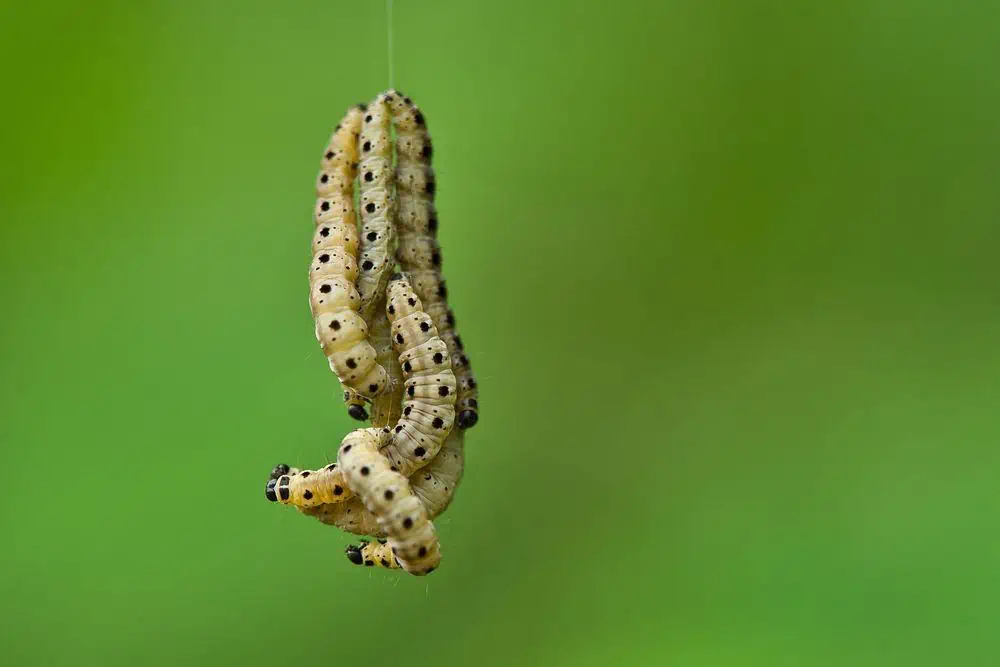
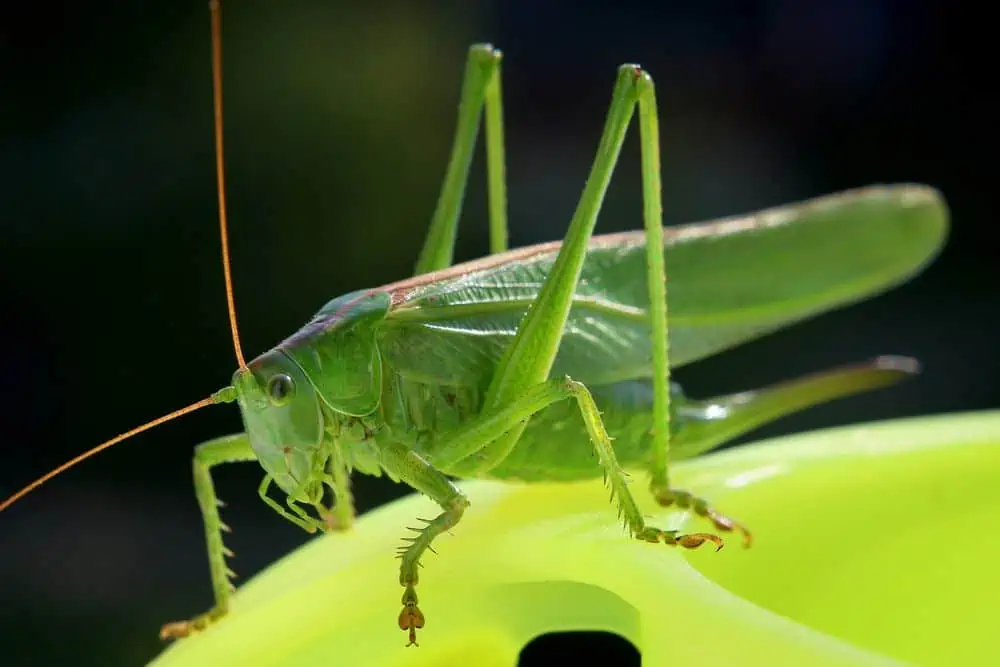
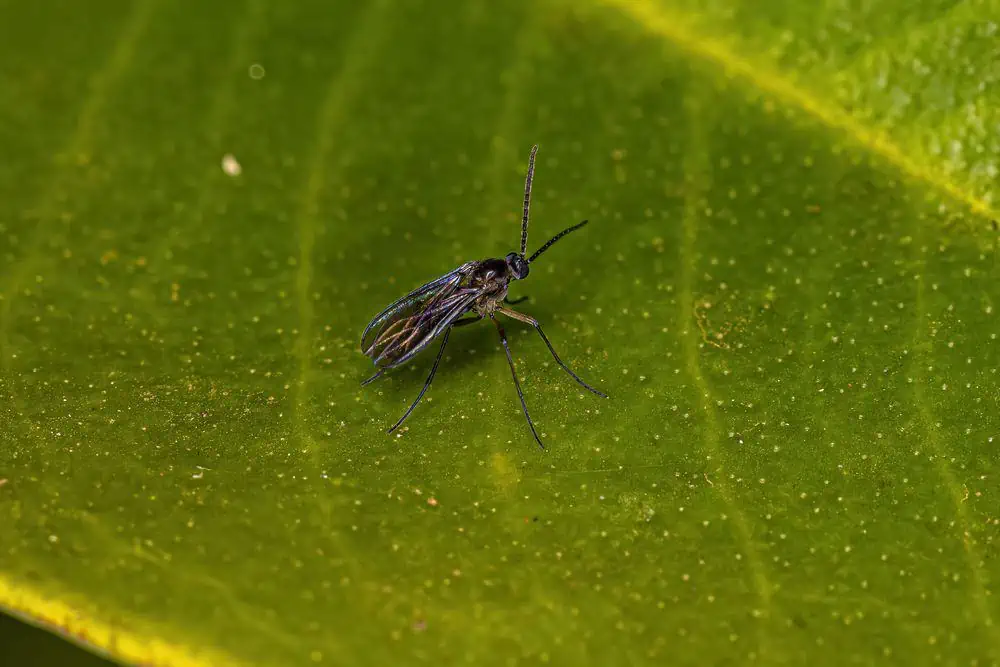

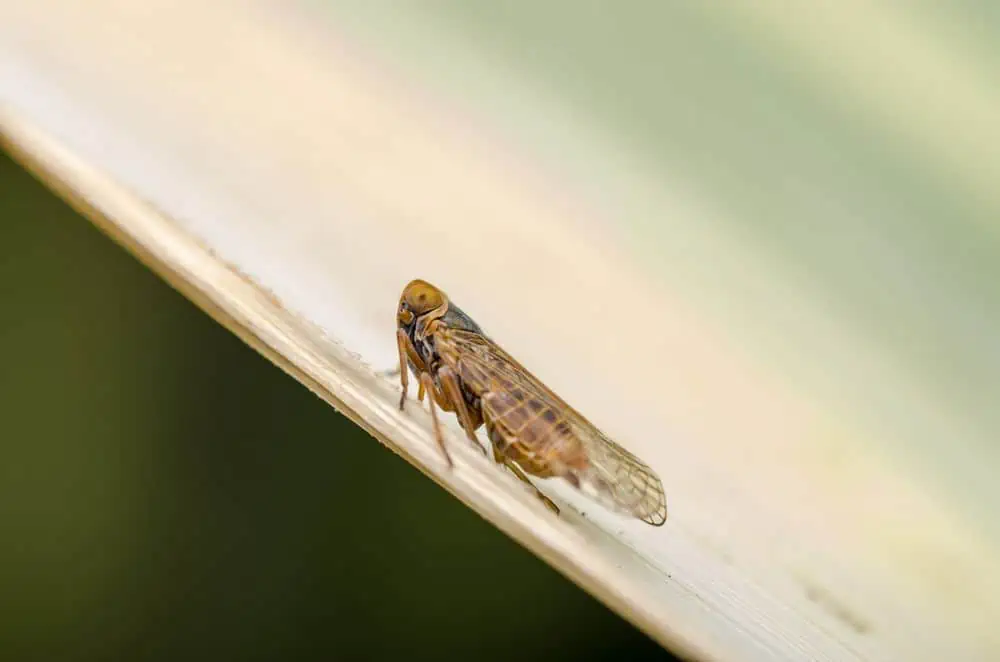
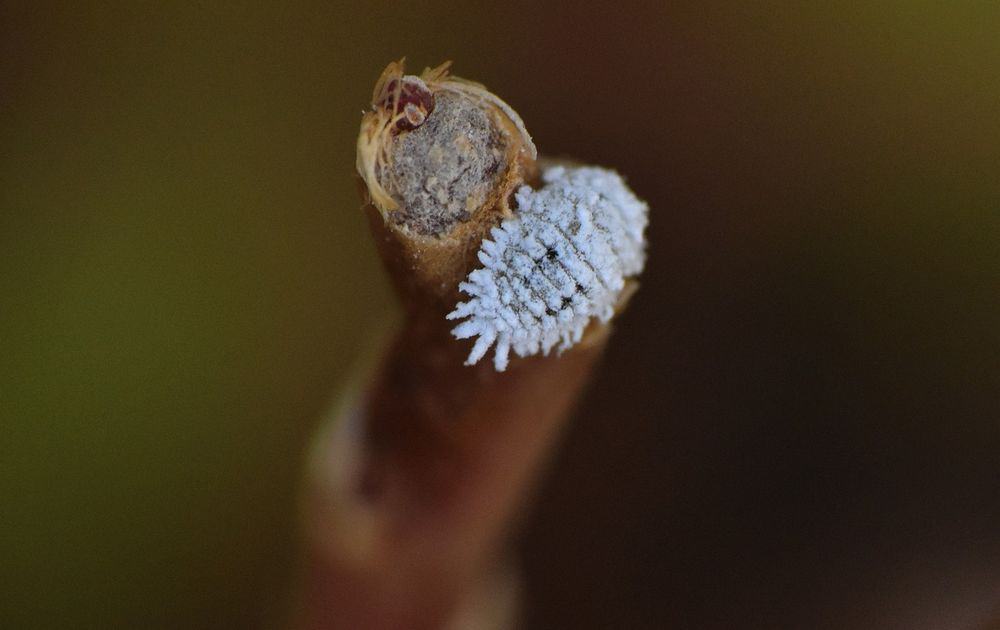

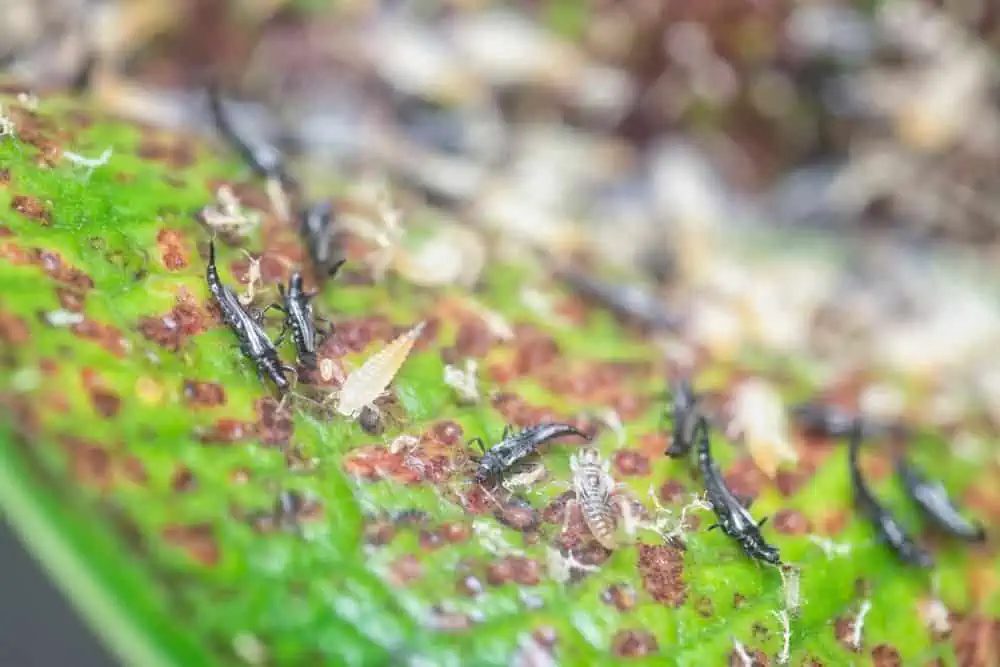
Blair says
1 pest thats is fairly common with cannabis grows that was not mentioned is spider mites .i grow indoor about 50 plants at a time vegging and budding year round …i have battled fngus gnats mostly ….a thrips …in 5 years of growing . Im not sure if it a climate thing where i live …east coast of canada …but fungus knats is the main pest .